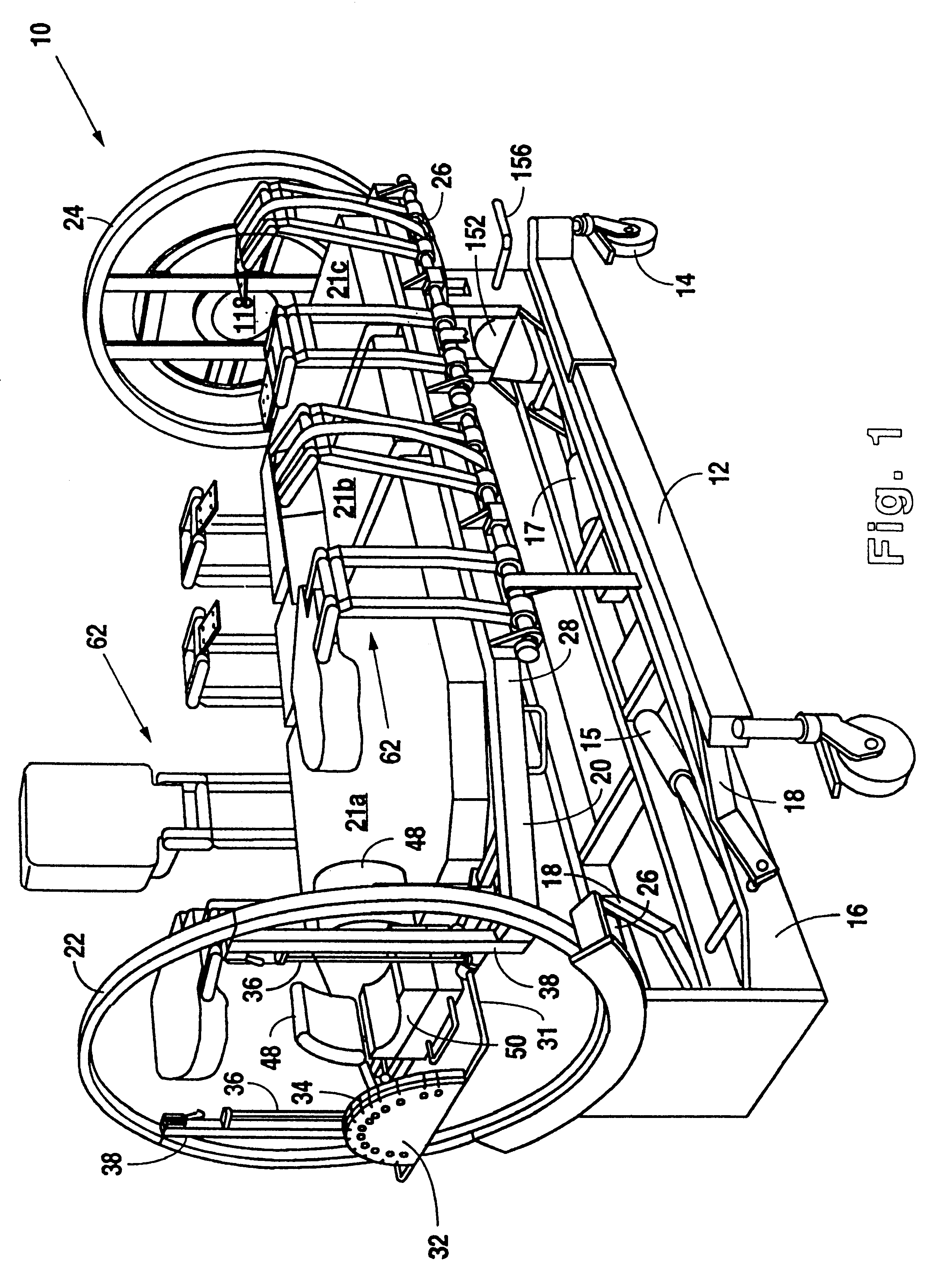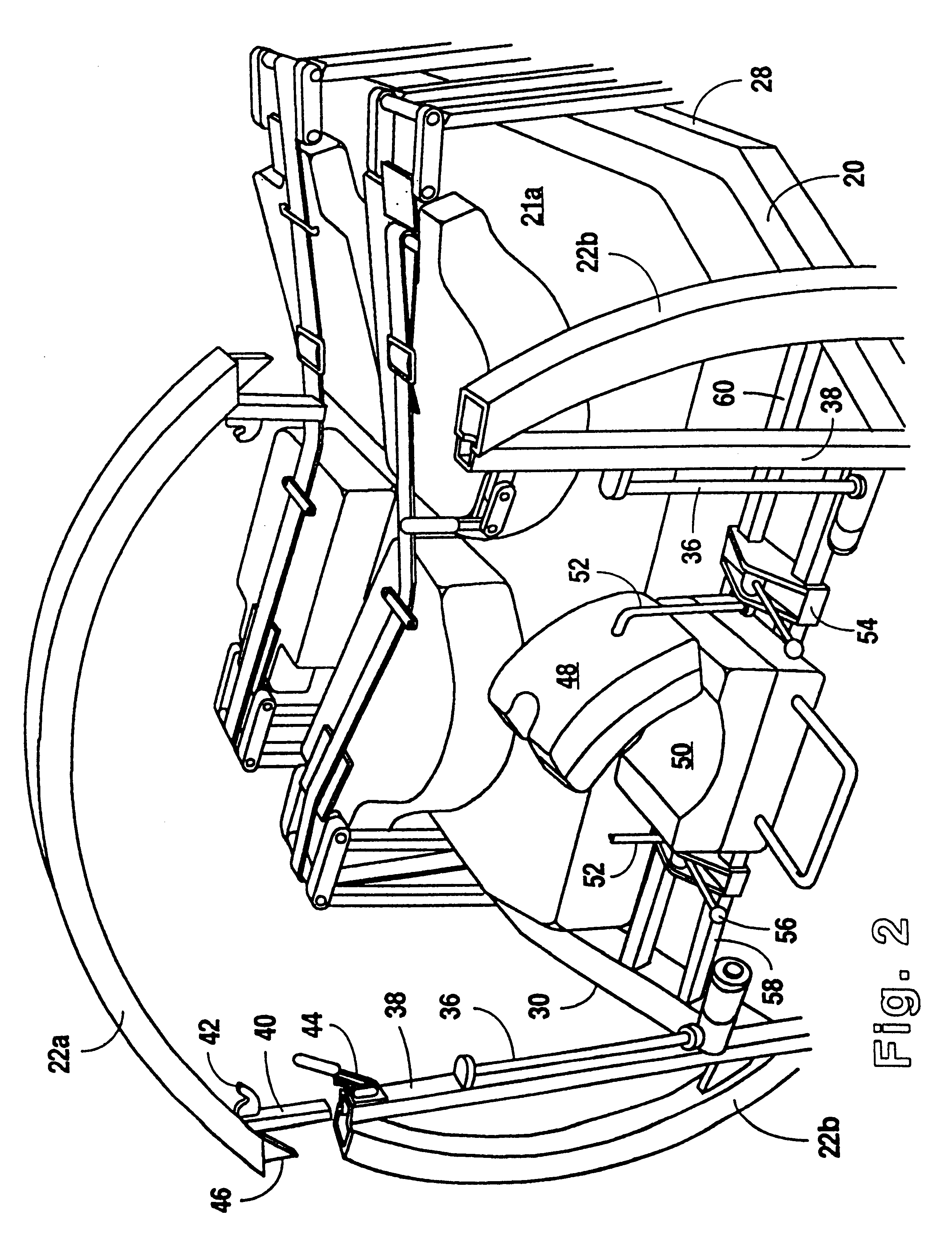Prone positioning therapeutic bed
a technology of prone positioning and therapeutic beds, which is applied in the field of therapeutic beds, can solve the problems of obstructing the access to the head of the patient, obstructing the access to the patient in the supine position, and obstructing the access to the patien
- Summary
- Abstract
- Description
- Claims
- Application Information
AI Technical Summary
Benefits of technology
Problems solved by technology
Method used
Image
Examples
Embodiment Construction
Referring to FIGS. 1 and 2, a therapeutic bed 10 in accordance with the present invention preferably comprises a ground engaging chassis 12 mounted on wheels 14. A base frame 16 is mounted on chassis 12 with pivot linkages 18. Rams 15, 17 housed within base frame 16 cooperate with pivot linkages 18 to form a lift system to raise and lower base frame 16 on chassis 12. A patient support platform 20 having upright end rings 22, 24 is rotatably mounted on base frame 16 with rollers 26 such that patient support platform 20 may rotate about a longitudinal axis between a supine position and a prone position. Side support bars 28, 30 extend between end rings 22, 24. At the head of bed 10, a guide body 32 having a plurality of slots 34 for routing patient care lines (not shown) is slidably mounted on rails 36 with support rod 31. Similarly, at the foot of bed 10, a central opening 118 is provided for receiving a removable patient care line holder (not shown) having a plurality of circumferen...
PUM
 Login to View More
Login to View More Abstract
Description
Claims
Application Information
 Login to View More
Login to View More - R&D
- Intellectual Property
- Life Sciences
- Materials
- Tech Scout
- Unparalleled Data Quality
- Higher Quality Content
- 60% Fewer Hallucinations
Browse by: Latest US Patents, China's latest patents, Technical Efficacy Thesaurus, Application Domain, Technology Topic, Popular Technical Reports.
© 2025 PatSnap. All rights reserved.Legal|Privacy policy|Modern Slavery Act Transparency Statement|Sitemap|About US| Contact US: help@patsnap.com



